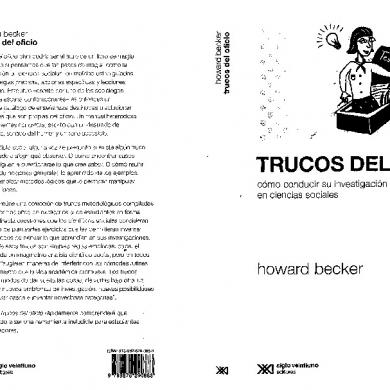Activity Seismic Waves
This document was uploaded by user and they confirmed that they have the permission to share it. If you are author or own the copyright of this book, please report to us by using this DMCA report form. Report DMCA
Overview
Download & View Activity Seismic Waves as PDF for free.
More details
- Words: 1,054
- Pages: 5
Loading documents preview...
Name
Date
Period
Slinky Lab- Simulating the Motion of Earthquake Waves. C O O R D I NATE D S C I E N C E 1 Background: You will utilize a slinky to model earthquake waves, learn the speed, direction and behavior of different waves which tell scientists about earthquakes. Earthquakes and volcanoes are evidence for plate tectonics. Earthquakes are caused when energy is released as the lithosphere (crust and upper mantle) of the Earth moves. Energy is emitted in the form of waves. There are different types of waves, some move faster, slower, sideways, or up and down. A seismograph records these waves on a seismogram. When an earthquake is recorded it is called an earthquake "event." There are two types of waves we will investigate, Pwaves and S-waves. P-waves or primary waves, are the first waves that the seismograph records. The P-wave is the "fast" wave and can be called a pushpull wave, because it moves by contracting and expanding along a horizontal path. The second major type of seismic wave is called an S-wave. S-waves are shear waves and move from side-to-side. S-waves are slower than P-waves. The particle motion in shear waves is perpendicular to the direction of the wave. Proceedure: PART 1: P-WAVES (PUSH & PULL): 1. Form groups of 3 to 4 students each 2. Each group need to get one slinky (do not overstretch them!) 3. Begin by stretching the Slinky 3 meters (6 feet) between your partner and yourself. One person will hold each end. 4. The other person will be timing the waves on the Slinky (two complete trip, back and forth). Practice first by pulling the Slinky toward you a bit and then pushing it away. Notice that a wave travels along the Slinky from you to your partner (this would make a total distance of 12 m) 5. You will do 3 trials of the P-wave, timing the wave as it does one complete trip back and forth. Record the information in Data Table #1 and sketch the movement of the Slinky in the space provided on the next page 6. Calculate the average (find the mean) of the 3 trial times and enter into Data Table #1. Now use this time and distance (4 meters) to calculate the average speed v PART 2: S-WAVES (SIDE TO SIDE):
d t
1. Shake one end of the Slinky from side to side. Notice that a different type of wave travels along the Slinky. This time the sections of the Slinky move from side to side (horizontally), but the movement of the Slinky is at right angles to the direction of the progressing wave
2. You will do 3 trials of the S-wave, timing the waves as it dos two complete trip back and forth. Record the information in Data Table #2 and sketch the movement of the Slinky in the space provided below 3. Take the average (find the mean) of the 3 trial times and record it in Data Table #2 4. When you have completed the trials, return the slinky and answer the Conclusion Questions
TABLE #1: SPEED OF P-WAVES TRIAL
TIME (seconds)
1 2 3. AVERAGE = AVERAGE SPEED=
12 m/
s=
m/
TABLE #2: SPEED OF S-WAVES TRIAL
TIME (seconds)
1 2 3 AVERAGE = AVERAGE SPEED=
12 m/ Drawing of P-wave
Drawing of S-wave
s=
m/s
Background: When an earthquake begins the stress on large blocks of rock becomes greater than the strength of the rock. The rock breaks, releasing large amounts of energy. This energy is carried outward in all directions by various seismic waves, some of which can reach the opposite side of the earth in about twenty minutes. The further the waves travel from the focus of the earthquake, the weaker they become. P-waves push and pull the underground rocks, causing structures on the surface to move back and forth. SH-waves move the rocks beneath the earth's surface from side to side, giving buildings on the surface a good shaking, often with very damaging effects. With SV-waves, the shaking is in a vertical direction-which sometimes can be enough to launch you out of your seat. S-waves and P-waves cause high-frequency vibrations that tend to cause low buildings to vibrate more than tall structures. A different class of seismic waves are surface waves. They are long, slow waves. The low-frequency vibrations that they induce in buildings have more effect on tall buildings than on low ones. Love waves (also named Q-waves) are surface seismic waves that cause horizontal shifting of the earth during an earthquake and shake things from side-to-side. (A.E.H. Love predicted the existence of Love waves mathematically in 1911). The slowest seismic waves, Rayleigh waves, (predicted in 1885 by Lord Rayleigh), are rolling waves that make you feel as if you're struggling to keep your balance on a ship in the open ocean. Conclusion Questions: 1. Which type of waves traveled the fastest in your experiment?
2. Does this agree with the known facts about P-waves and S-waves that cause earthquakes? (Read Background information above)
3. Which types of earthquake wave travels even slower than P-waves and S-waves?
4. Which type of waves cause the most damage during an earthquake? Why?
5. Which frequency of wave (high or low) effect tall buildings the most? Low buildings?
6. To measure the energy released from an earthquake and the resultant magnitude of the “shaking”, scientists developed a tool called a seismograph. The picture below (seismogram) shows a typical earthquake. The arrows below indicate which types of waves were recorded first (traveled the fastest). Identify each type of wave. A.
B.
C.
7. The seismogram below shows the arrival times of the seismic waves at two different cites. Using the information in the graph, and assuming the wave travels at about 5 km/s, calculate how much further Hedmark is from the epicenter, than Karasjok. (HINT: distance = velocity x time)
d vt
8. Animals have keen senses that help them avoid predators or locate prey. It is thought that these senses might also help them detect an approaching earthquake before we feel the shaking. Many animals like our pet dogs and cats can hear higher frequency waves than humans can. How might this explain why they can sense and earthquake before we know about it?
Date
Period
Slinky Lab- Simulating the Motion of Earthquake Waves. C O O R D I NATE D S C I E N C E 1 Background: You will utilize a slinky to model earthquake waves, learn the speed, direction and behavior of different waves which tell scientists about earthquakes. Earthquakes and volcanoes are evidence for plate tectonics. Earthquakes are caused when energy is released as the lithosphere (crust and upper mantle) of the Earth moves. Energy is emitted in the form of waves. There are different types of waves, some move faster, slower, sideways, or up and down. A seismograph records these waves on a seismogram. When an earthquake is recorded it is called an earthquake "event." There are two types of waves we will investigate, Pwaves and S-waves. P-waves or primary waves, are the first waves that the seismograph records. The P-wave is the "fast" wave and can be called a pushpull wave, because it moves by contracting and expanding along a horizontal path. The second major type of seismic wave is called an S-wave. S-waves are shear waves and move from side-to-side. S-waves are slower than P-waves. The particle motion in shear waves is perpendicular to the direction of the wave. Proceedure: PART 1: P-WAVES (PUSH & PULL): 1. Form groups of 3 to 4 students each 2. Each group need to get one slinky (do not overstretch them!) 3. Begin by stretching the Slinky 3 meters (6 feet) between your partner and yourself. One person will hold each end. 4. The other person will be timing the waves on the Slinky (two complete trip, back and forth). Practice first by pulling the Slinky toward you a bit and then pushing it away. Notice that a wave travels along the Slinky from you to your partner (this would make a total distance of 12 m) 5. You will do 3 trials of the P-wave, timing the wave as it does one complete trip back and forth. Record the information in Data Table #1 and sketch the movement of the Slinky in the space provided on the next page 6. Calculate the average (find the mean) of the 3 trial times and enter into Data Table #1. Now use this time and distance (4 meters) to calculate the average speed v PART 2: S-WAVES (SIDE TO SIDE):
d t
1. Shake one end of the Slinky from side to side. Notice that a different type of wave travels along the Slinky. This time the sections of the Slinky move from side to side (horizontally), but the movement of the Slinky is at right angles to the direction of the progressing wave
2. You will do 3 trials of the S-wave, timing the waves as it dos two complete trip back and forth. Record the information in Data Table #2 and sketch the movement of the Slinky in the space provided below 3. Take the average (find the mean) of the 3 trial times and record it in Data Table #2 4. When you have completed the trials, return the slinky and answer the Conclusion Questions
TABLE #1: SPEED OF P-WAVES TRIAL
TIME (seconds)
1 2 3. AVERAGE = AVERAGE SPEED=
12 m/
s=
m/
TABLE #2: SPEED OF S-WAVES TRIAL
TIME (seconds)
1 2 3 AVERAGE = AVERAGE SPEED=
12 m/ Drawing of P-wave
Drawing of S-wave
s=
m/s
Background: When an earthquake begins the stress on large blocks of rock becomes greater than the strength of the rock. The rock breaks, releasing large amounts of energy. This energy is carried outward in all directions by various seismic waves, some of which can reach the opposite side of the earth in about twenty minutes. The further the waves travel from the focus of the earthquake, the weaker they become. P-waves push and pull the underground rocks, causing structures on the surface to move back and forth. SH-waves move the rocks beneath the earth's surface from side to side, giving buildings on the surface a good shaking, often with very damaging effects. With SV-waves, the shaking is in a vertical direction-which sometimes can be enough to launch you out of your seat. S-waves and P-waves cause high-frequency vibrations that tend to cause low buildings to vibrate more than tall structures. A different class of seismic waves are surface waves. They are long, slow waves. The low-frequency vibrations that they induce in buildings have more effect on tall buildings than on low ones. Love waves (also named Q-waves) are surface seismic waves that cause horizontal shifting of the earth during an earthquake and shake things from side-to-side. (A.E.H. Love predicted the existence of Love waves mathematically in 1911). The slowest seismic waves, Rayleigh waves, (predicted in 1885 by Lord Rayleigh), are rolling waves that make you feel as if you're struggling to keep your balance on a ship in the open ocean. Conclusion Questions: 1. Which type of waves traveled the fastest in your experiment?
2. Does this agree with the known facts about P-waves and S-waves that cause earthquakes? (Read Background information above)
3. Which types of earthquake wave travels even slower than P-waves and S-waves?
4. Which type of waves cause the most damage during an earthquake? Why?
5. Which frequency of wave (high or low) effect tall buildings the most? Low buildings?
6. To measure the energy released from an earthquake and the resultant magnitude of the “shaking”, scientists developed a tool called a seismograph. The picture below (seismogram) shows a typical earthquake. The arrows below indicate which types of waves were recorded first (traveled the fastest). Identify each type of wave. A.
B.
C.
7. The seismogram below shows the arrival times of the seismic waves at two different cites. Using the information in the graph, and assuming the wave travels at about 5 km/s, calculate how much further Hedmark is from the epicenter, than Karasjok. (HINT: distance = velocity x time)
d vt
8. Animals have keen senses that help them avoid predators or locate prey. It is thought that these senses might also help them detect an approaching earthquake before we feel the shaking. Many animals like our pet dogs and cats can hear higher frequency waves than humans can. How might this explain why they can sense and earthquake before we know about it?
Related Documents

Wolfe Waves
January 2021 2
Waves Experiments
January 2021 5
Seismic Load Computation
February 2021 0
Nscp Seismic Design
February 2021 1
Fundamentals Of Seismic Tomography
January 2021 3
Waves-of-devotion.pdf
January 2021 2More Documents from "absk432"





